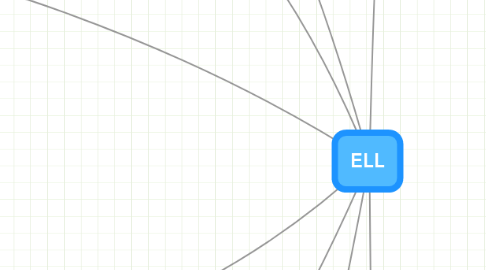
1. Syntax
1.1. Sentences
1.1.1. Compound-complex
1.1.2. Compound
1.1.3. Complex
1.1.4. Simple
1.1.5. Passive vs Active vs Agentless
1.1.6. Types
1.1.6.1. Declarative
1.1.6.2. Interrogative
1.1.6.2.1. Question tag
1.1.6.3. Exclamative
1.1.6.4. Imperative
1.1.6.5. Direct Speech
1.1.6.6. Indirect Speech
1.2. Disjunctive
1.3. Syntactic Parallelism
2. Textual cohesion
2.1. Cohesive Devices
2.1.1. Reference
2.1.1.1. Textual co-reference
2.1.1.1.1. Direct Repetition
2.1.1.1.2. Superordinates
2.1.1.1.3. Synonyms
2.1.1.1.4. Generalising Noun
2.1.1.2. Endophoric vs Exophoric
2.1.1.2.1. Endophoric
2.1.1.2.2. Exophoric
2.1.1.2.3. Comparative
2.1.1.2.4. Bridging
2.1.1.3. Intertextuality
2.1.2. Substitution
2.1.2.1. Nominal
2.1.2.2. Verbal
2.1.2.3. Clausal
2.1.3. Ellipsis
2.1.3.1. Nominal
2.1.3.2. Verbal
2.1.3.3. Clausal
2.1.4. Conjunction
2.1.4.1. Discourse Markers
2.1.5. Lexical Cohesion
2.1.5.1. Repetition
2.1.5.2. Synonymy
2.1.5.3. Antonymy
2.1.5.4. Hyponymy
2.1.5.4.1. Hypernym
2.1.5.4.2. Hyponym
2.1.5.5. Meronymy
2.1.5.6. Collocation
2.1.5.7. Lexical Bundles
2.1.5.7.1. Certainty, possibility
2.1.5.7.2. Attitudes
2.1.5.7.3. Permission
2.1.5.7.4. Desire
2.1.5.7.5. Obligation
2.1.5.7.6. Intention
3. Theme-rheme
3.1. Topical
3.1.1. Circumstantial Adjunct
3.1.2. Subject
3.1.3. Complement
3.2. Textual
3.3. Interpersonal
4. Morphology
4.1. Compounding
4.2. Clipping
4.3. Blending
4.4. Conversion
4.5. Abbreviations
4.5.1. Initialism
4.5.2. Acronym
4.6. Eponyms
4.7. Coinages/Neologisms
4.7.1. Netspeak
4.8. Nonce Words
4.9. Borrowing
4.9.1. Loanwords
4.10. Calquing
5. Mood
6. Multimodality
6.1. Intersemiotic Complementarity
7. Word Class/Lexis
7.1. Nouns
7.1.1. Proper
7.1.2. Concrete or Abstract
7.1.3. Common
7.1.4. Nouns in Apposition
7.1.4.1. Definite descriptions
7.1.5. Nonce words
7.1.6. Gender-neutral or Gender-marked
7.2. Adverbs
7.2.1. Circumstance
7.2.1.1. Time
7.2.1.2. Manner
7.2.1.3. Frequency
7.2.1.4. Place
7.2.1.5. Distance
7.2.2. Modality
7.2.2.1. Possibility
7.2.2.2. Necessity
7.2.2.3. Ability
7.2.2.4. Degree
7.2.2.5. Emphasis
7.2.3. Conjunctive
7.2.4. Adverbial vs Adverb Phrase
7.2.5. Amplifiers vs Downtoners
7.3. Adjectives
7.3.1. Inflectional or Periphrastic
7.3.2. Gradable
7.3.2.1. Comparative
7.3.2.2. Superlative
7.3.3. Non-gradable
7.3.4. .
7.3.4.1. Attributive
7.3.4.2. Postpositive
7.3.4.3. Predicative
7.3.5. .
7.3.5.1. Attitudinal Epithet
7.3.5.1.1. Evaluative Adjective
7.3.5.2. Experiential Epithet
7.3.5.3. Qualifying Adjective
7.3.5.4. Classifying Adjective
7.4. Determiners
7.4.1. Article
7.4.1.1. Definite
7.4.1.2. Indefinite
7.4.2. Pronouns
7.4.2.1. Relative
7.4.2.2. Inclusive or Exclusive
7.4.2.3. Personal
7.4.2.4. Possessive
7.4.2.5. 1st/2nd/3rd Person
7.4.2.6. Direct address
7.5. High/low frequency
7.5.1. Technical Jargon
7.6. Ameliorative vs Pejorative
7.7. Connotations
7.7.1. Loaded words
7.8. Verbs
7.8.1. Process verbs
7.8.1.1. Relational
7.8.1.2. Material
7.8.1.3. Mental
7.8.1.4. Behavioural
7.8.1.5. Verbal
7.8.1.6. Existential
7.8.2. Auxiliary vs Lexical
7.8.2.1. Lexical
7.8.2.2. Auxiliary
7.8.2.2.1. Modal Auxiliary
7.8.2.2.2. Primary Auxiliary
7.9. Prepositions
7.9.1. Prepositional phrase
7.10. Conjunctions
7.10.1. Co-ordinating
7.10.1.1. Parataxis
7.10.2. Subordinating
7.10.2.1. Hypotaxis
7.10.3. Correlative
7.10.4. Categories
7.10.4.1. Additive
7.10.4.2. Causative
7.10.4.3. Adversative
7.10.4.4. Temporal
